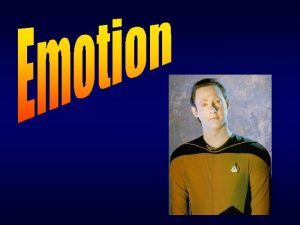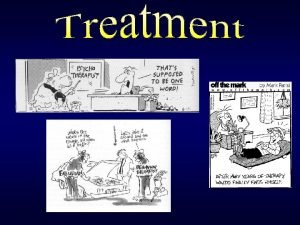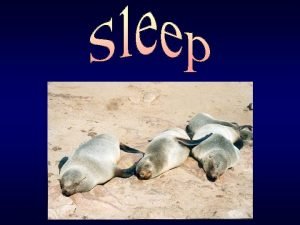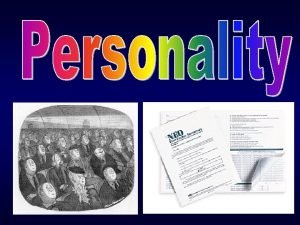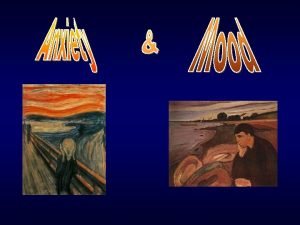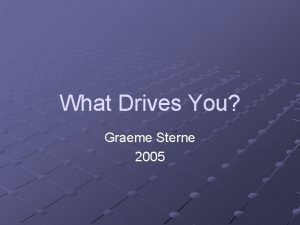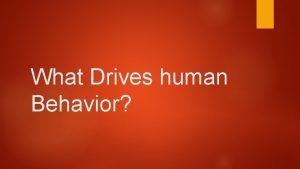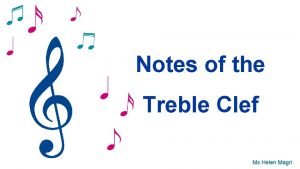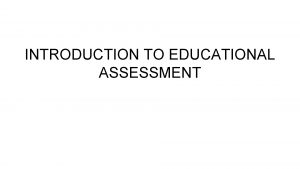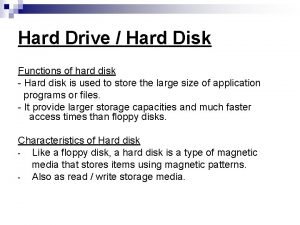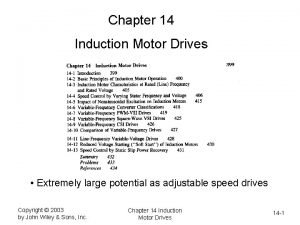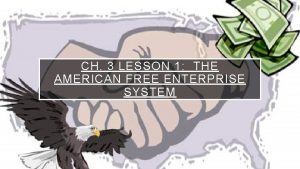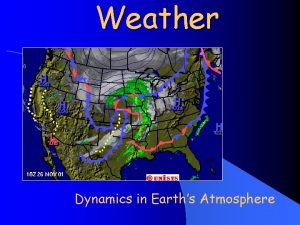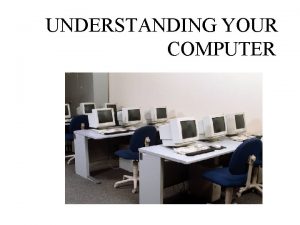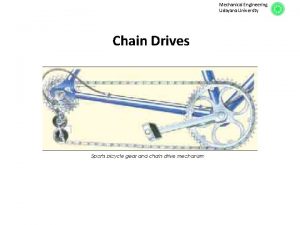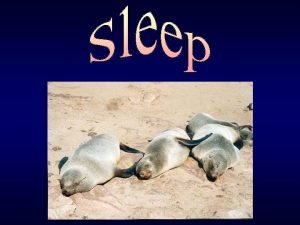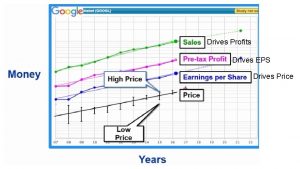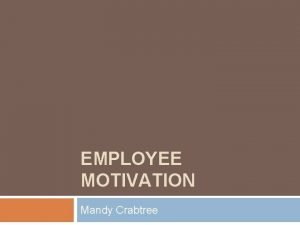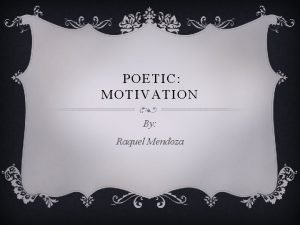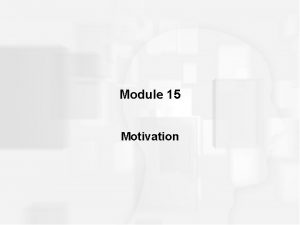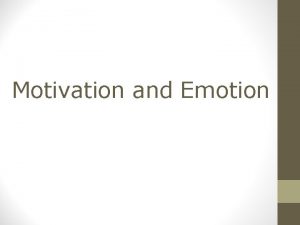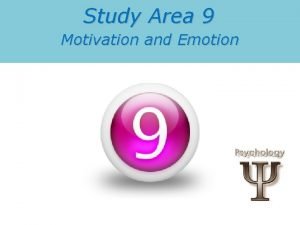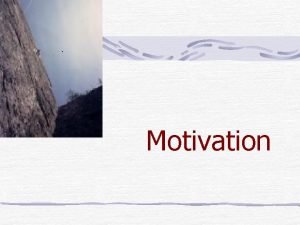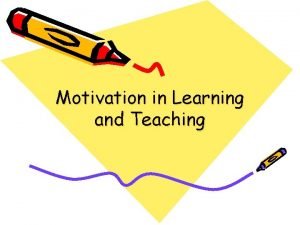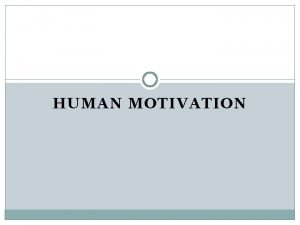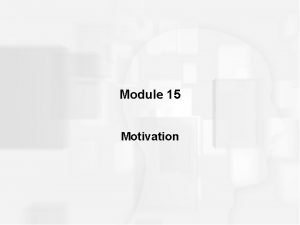Three Minute Review Motivation 1 what drives people
































- Slides: 32


Three Minute Review: Motivation 1 • what drives people to behave the way they do? • regulatory drives – homeostasis – thermostat analogy • non-regulatory drives • hypothalamus – tiny area, important functions, links with limbic system, 4 F’s • Hunger – “hunger centre” (LH) vs. “satiation centre” (VMH) – how does the body maintain the correct level of food intake? – interplay between VMH and LH • see also more detailed explanations, Gray Ch. 6, FQ 10 – feeling full – blood glucose levels – fat cells secrete leptin

– obesity • twin studies and adoption studies can be useful in nature vs. nurture questions • genetic factors play a large role in weight gain and weight distribution • “thrifty gene” in a Supersize culture? • set point theory – changes to food intake may shift the set point making it harder to change your weight – eating disorders • anorexia nervosa • bulimia nervosa • have our cultural ideals become unreasonable?

Sex • What determines sex drive? – Hormones • androgens • estrogens – Cultural influences and situations more important to women – Genetics • Is there a “gay gene”? • Sex Differences in Sex Drive – Women • status, money, age, and concern for children – Men • beauty, youth and sex – Evolutionary theory • women: find a solid guy with good resources who’ll stick around • men: sow your seeds far and wide

Test Yourself Which of the following could cause a rat to eat (true/false)? (From the lecture) • electrical stimulation to the ventromedial hypothalamus • a lesion (damage) to the ventromedial thalamus • electrical stimulation to the lateral hypothalamus • a lesion to the lateral hypothalamus • a decrease in blood glucose below the set point • a decrease in body fat below the set point (From the book) • an injection of leptin • an injection of insulin • a water-filled balloon in the stomach • the presence of especially tasty rat chow even if the rat isn’t particularly hungry • bell-ringing for a rat with a bell-food association (Pavlov’s rat? )

You asked… Can leptin be used as a diet aid? Your TA, Ben Bowles, looked into this and said… • Apparently there was much hype about leptin as a potential obesity therapy about 5 years ago. However, a science paper that came out in 1999 showed that leptin was not an effective therapy. • Although they are not exactly sure why, it seems as though one reason it might not be effective is because obesity stems not from a lack of leptin but due to an insensitivity to it. It may be that if the cells don't detect it while it is there, adding more might not have the intended effect. • Recent and current work on the subject is geared towards finding out why leptin doesn't work properly in people who are overweight. The insensitivity of some people to leptin may be due to an evolutionary adaptation that aims to store fat for times where no food is available.

Clarification: What do men want? (Clark & Hatfield, 1989) • Attractive men and women hired to approach strangers of the opposite sex on a college campus • "I have been noticing you around campus. I find you very attractive. " 1. "Would you go out with me tonight? “ • % of women who said “Yes”: 50% • % of men who said “Yes”: 50% 2. "Would you come over to my apartment tonight? “ • % of women who said “Yes”: 6% • % of men who said “Yes”: 69% 3. "Would you go to bed with me tonight? “ • % of women who said “Yes”: 0% • % of men who said “Yes”: 75%

Why have emotions? What is this man from New Guinea feeling -anger, happiness, disgust, sadness? Video: Cavanagh: Disk 3 Emotion Expression (2: 10) 1. Emotions communicate – 2. Emotions aid in decision-making – – 3. 4. consistent across cultures and even species gut feelings often right people with damage to the emotional system (orbitofrontal cortex) are poor at using past outcomes to regulate future behavior in a gambling task Emotions capture attention and aid memory Emotions strengthen interpersonal relations – guilt, embarrassment, jealousy

Dimensions of Emotion

Autonomic Nervous System Fig. 5. 4

Arousal • Imagine you’re writing an exam of average difficulty. How well would you do if you were – really mellow or drowsy – average – really stressed (or hooped on chocolate-covered espresso beans)? QUALITY OF PERFORMANCE Low Medium High LEVEL OF AROUSAL

Arousal • How much coffee would you want to drink if you were: – driving? – writing an exam? – giving an important talk for the first time?

Yerkes & Dodson (1908) Rats could avoid shock by going into brighter of two compartments Experimenters varied the strength of the shocks given to the rat and measured their accuracy at picking the brighter compartment.

Yerkes-Dodson Curve Yerkes & Dodson (1908) • rats did best if: – the task was easy and they were highly aroused (by strong shocks) – the task was moderately difficult and they were moderately aroused (by moderate shocks) – the task was difficult and they were weakly aroused (by weak shocks)

Theories of Emotion 1. Common Sense Theory

Theories of Emotion 2. James-Lange “…we feel sorry because we cry, angry because we strike, afraid because we tremble, and not that we cry, strike or tremble because we are sorry, angry or fearful. ” -- William James

Facial Feedback Theory

Theories of Emotion 3. Cannon-Bard Theory

Schachter’s Experiment Schachter & Singer (1962) • subjects were injected with adrenaline (or a placebo) – adrenaline sweaty palms, increased heart rate, shakes • some subjects were told they would feel aroused; some were told nothing • left subjects in a waiting room with a confederate – euphoria condition • confederate played with a hula hoop and made paper airplanes – angry condition Stanley Schachter 1922 -1997 • confederate asked obnoxious personal questions (e. g. , “With how many men other than your father has your mother had extramarital relations: (a) <5; (b) 5 -9; (c) >9”)

Schachter’s Results

Theories of Emotion 4. Schachter’s Attribution Theory Cognitive appraisal = TYPE of Emotion Degree of Arousal = INTENSITY of Emotion This figure is simpler than Fig. 6. 24 (which you can ignore) in your text

Misattribution of Emotion • emotions can be attributed to the wrong source (Dutton & Aron, 1974) • male subjects were asked to meet the experimenter on a bridge across the Capilano River in B. C. – Group 1: Capilano suspension bridge – Group 2: sturdy modern bridge • attractive female research assistant interviewed them in the middle of the bridge and gave her phone number • Men interviewed on the scary bridge were more likely to call her

Which woman is more attractive?

An idea for your next date?

Emotion in the Brain

The Amygdala • part of the limbic system (with the hippocampus and hypothalamus) • amygdala = “almond” • processes emotional significance of stimuli and generates immediate reactions • damage to amygdala – inability to recognize facial emotions – absence of fear – absence of conditioned fear response • abnormal activation of amygdala – sudden violent rage • in brain imaging studies, the amygdala is activated by scary stimuli (even if you’re not aware of them)

Frontal Lobes • Phineas Gage – “Gage is no longer Gage”

Frontal Lobotomies • 1935: chimps who were neurotic before surgery became more relaxed after it • 1930 s: Egaz Moniz begins frontal lobotomies in humans (and eventually wins Nobel Prize) • 1950 s: psychosurgery in vogue; 40, 000 frontal lobotomies in North America • The story of Agnes (Kolb & Whishaw) – no outward signs of emotion – no facial expression – no feelings toward other people (but still liked her dog) – felt empty, zombie-like – Other patients lose prosody = emotional component of speech • orbitofrontal cortex – Patients with damage can remember info but don’t have emotions associated with it

Lie Detectors Polygraph tests are far from infallible • In one study (Klein-muntz & Szucko, 1984), polygraph tests identified guilty person 76% of time but falsely accused a truth-teller 37% of the time

Frontal patients show flat skin conductance to disturbing stimuli

Right hemisphere specialized for emotion • Happy or sad? • Why? – right hemisphere specialized for recognizing emotions

Do the two hemispheres have different personalities? • left hemisphere – activated by positive emotions – left frontal damage depressed • sometimes overly catastrophic and weepy about injury – diminished left hemisphere activation in depressed people • right hemisphere – activated by negative emotions – right frontal damage fewer negative emotions • often not appropriately upset or concerned about injury
 What drives people
What drives people Gamit ang teknik na three minute review
Gamit ang teknik na three minute review Three minute review
Three minute review Three minute review
Three minute review Three minute review
Three minute review Three minute review
Three minute review What drives people to explore?
What drives people to explore? There are 60 minutes in ……... hour
There are 60 minutes in ……... hour Three fold classification of motivation security
Three fold classification of motivation security What drives you in life
What drives you in life What drives human behavior?
What drives human behavior? Bosch rexroth electric drives and controls
Bosch rexroth electric drives and controls Algo and amal
Algo and amal Bardac pl drives
Bardac pl drives A car drives around a curve with radius of 42 m
A car drives around a curve with radius of 42 m Saf drives
Saf drives Simpson drives his car with an average velocity of 48
Simpson drives his car with an average velocity of 48 Every green bus drives fast
Every green bus drives fast Curriculum drives assessment
Curriculum drives assessment Hard drive function
Hard drive function Closed loop control of dc drives
Closed loop control of dc drives Ac drives basics
Ac drives basics Simpson drives his car with an average velocity of 48
Simpson drives his car with an average velocity of 48 Mechanical drives and lifting machines n2
Mechanical drives and lifting machines n2 John drives very
John drives very What drives american free enterprise?
What drives american free enterprise? What drives weather
What drives weather There are two basic types of disk drives
There are two basic types of disk drives The force that through the green fuse drives the flower
The force that through the green fuse drives the flower Types of drives in mechanical
Types of drives in mechanical What drives computer graphics
What drives computer graphics 4 quadrant operation of induction motor
4 quadrant operation of induction motor Power control and drives
Power control and drives
